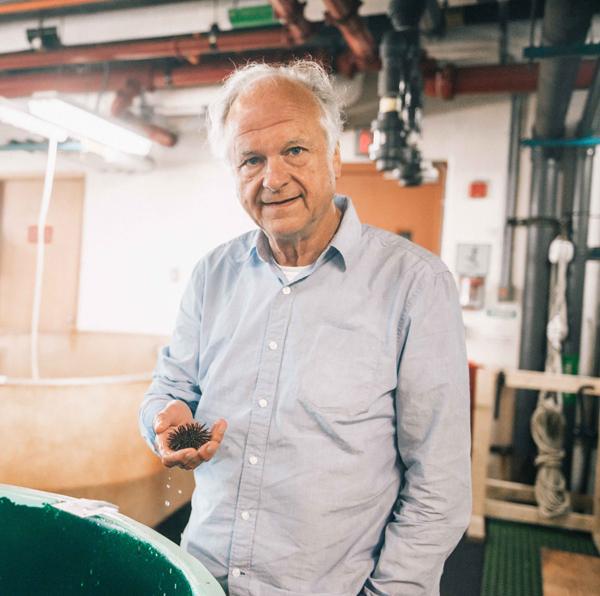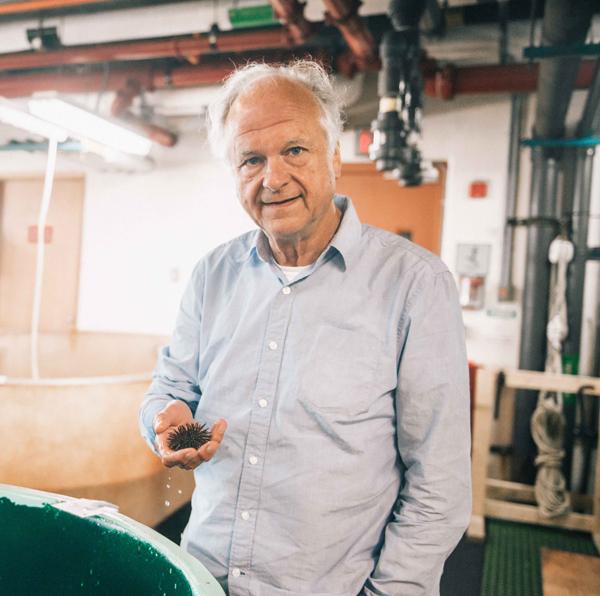
Credit: Megan Costello
WOODS HOLE, Mass. — Scientists affiliated with the Marine Biological Laboratory (MBL) have identified a key molecule driving chemoattraction between sperm and egg cells in marine invertebrates. The study was recently published in Nature Communications.
More than 100 years ago, MBL Director F.R. Lillie of the University of Chicago discovered that eggs from marine invertebrates release a chemical factor that attracts sperm, a process called chemotaxis. Sperm, for their part, swim up a chemical gradient to reach the egg, assisted by a pulsatile rise in calcium ion (Ca2+) concentration in the sperm tail that controls its beating.
In past years, many of the cellular components that translate chemoattractant stimulation into a Ca2+ response have been revealed, but a crucial ingredient has been missing. A prerequisite for Ca2+ ions from the sperm's environment being able to enter the tail is that the sperm cell's pH becomes more alkaline. The molecule that brings about this change in pH has been elusive.
In this new report, U. Benjamin Kaupp, a MBL Whitman Center Scientist from the Center of Advanced European Studies (Caesar) in Bonn, Germany, identifies this molecule. Kaupp spent 18 summers at the MBL conducting research in the footsteps of F.R. Lillie's original quest.
The molecule that Kaupp and colleagues identified allows sodium ions to flow into the sperm cell and, in exchange, transports protons out of the cell. Such so-called sodium/proton exchangers have been known for a long time, but this one is special. It is a chimaera that shares structural features with ion channels, called pacemaker channels, which control our heartbeat and electrical activity in the brain.
This sodium/proton exchange in the sperm cell, like in the pacemaker channels, is activated by a stretch of positively charged amino acids called the voltage sensor. When sperm capture chemoattractant molecules, the voltage becomes more negative, because potassium channels open and potassium ions leave the cell. The voltage-sensor registers this voltage change and the exchanger begins exporting protons from the cell; the cell's interior becomes more alkaline. When this mechanism is disabled, the Ca2+ pulses in the sperm tail are suppressed, and sperm are lost on their voyage to the egg.
###
The lead author on this report is Florian Windler from Kaupp's lab in Bonn. Windler and Reinhard Seifert studied this unique molecule during several research stays in the MBL Whitman Center.
Citation:
Windler, F. et al (2018) The solute carrier SLC9C1 is a Na+/H+-exchanger gated by an S4-type voltage-sensor and cyclic-nucleotide binding. Nature Communications, DOI: 10.1038/s41467-018-05253-xDOI: 10.1038
Media Contact
Diana Kenney
[email protected]
508-289-7139
@mblscience
http://www.mbl.edu
Original Source
http://www.mbl.edu/blog/the-rules-of-attraction-whitman-scientists-find-elusive-molecule-that-helps-sperm-find-egg/ http://dx.doi.org/10.1038/s41467-018-05253-x





